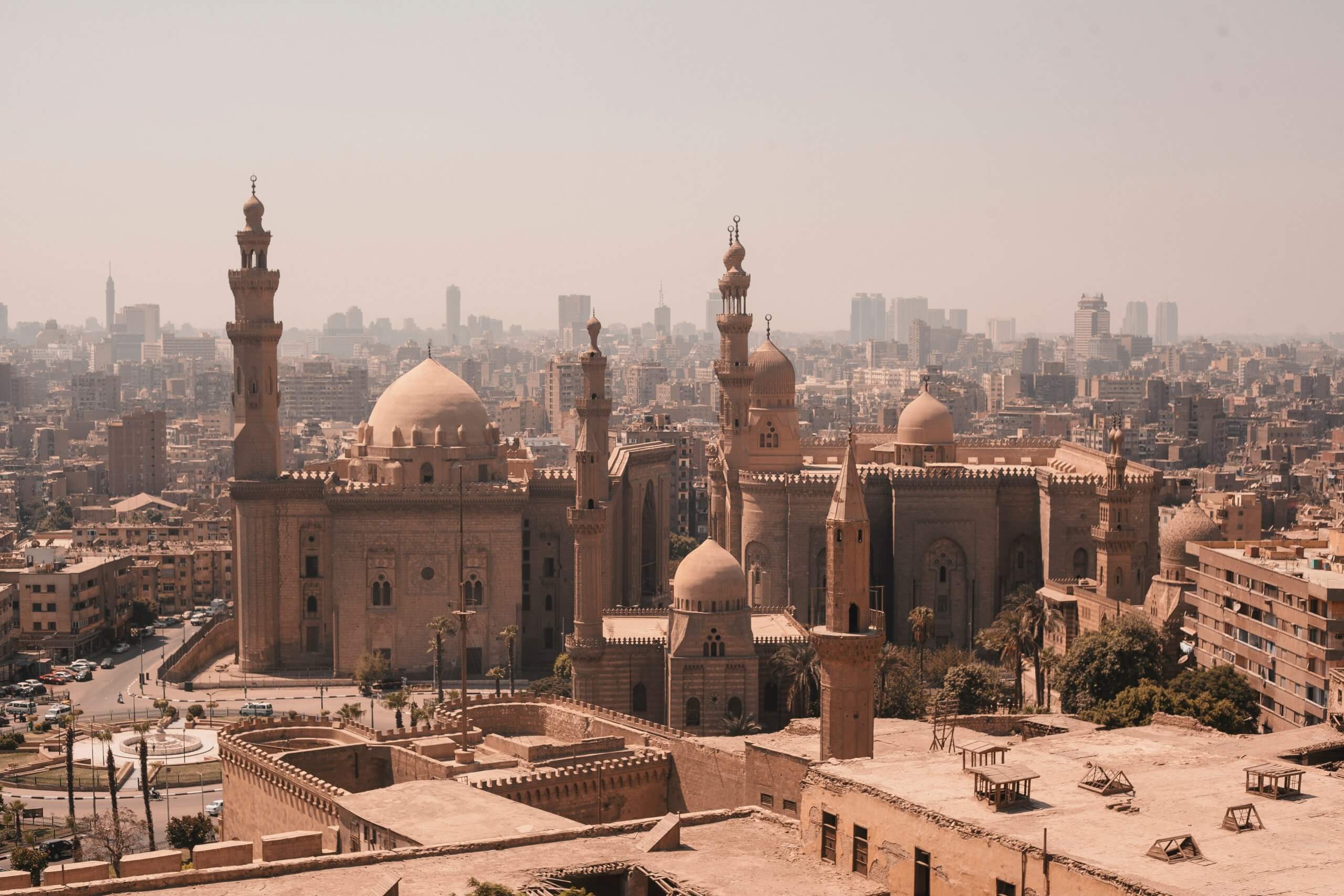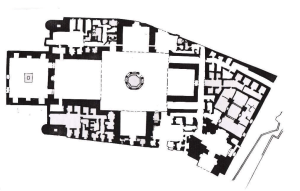The School of Sultan Hasan
(757-764 A.H) (1356-1363 A.D.)
The madrasa of Sultan Hasan and Rifaei Mosque overlook on Maydan al-Qalaa (Citadel Square) or Maydan Mohammed Ali, which was the setting for elaborating court ceremonies, military exercises, and religious processions.
The Madrasa of Sultan Hasan is one of the masterpieces of Mamluk architecture in Cairo because of the massive monumental style and of the cruciform madrasa plan.
The entrance is on Sharia al-Qalaa. The dimensions of the
building are colossal: the façade from the entrance is 76 meters long and 36 meters high. the horizontal mass of the façade is given extra emphasis by its division into thin vertical bays that end in the bold honeycomb cornice running along the top of its walls.
The portal is not in the middle of the façade. The tremendous height of the portal is emphasized by the spiral-cut pila
sters, as well as by the vertical panels on each side of the porch.
Just look up and note the effect produced by the stalactites over the entrance, it is like entering a magical cave.
From the richly decorated vestibule, with its stalactite-covered dome, one passes through a long double-bending passageway, which emp
ties into a magnificent marble-paved courtyard surrounded by four enormous vaulted Iwans.
The little gazebo, which dates from the Ottoman period, in the middle of the court was originally designed as a decorative fountain not for ablutions, its present function. The hundred of chains hanging down from the great arches once held enameled glass oil lamps, some beautiful examples of which can be seen in the Islamic museum. The inlaid marble paving of the courtyard dates back to the Comite restoration of 1912.
This was a functioning mosque with 4 madrasas, or coll
eges. Each of the vaulted recesses was for teaching one of the legal rites of Sunni Islam: the Shafei, Hanafi, Hanbali, and Maliki rites. Each madrasa had its own courtyard and four or five stories of rooms.
The eastern iwan is the mosque sanctuary. The are carving with deep relief of Quranic inscription.(the first six verses of Sura 48)
The stone minbar was originally decorated with an inlaid pattern. The platform or dikka in front of mihrab was for readers or chanters of the Quran to sit upon so that their voices could project out into the courtyard.
On either side of the mihrab, doors lead into the mausoleum. The door on the right, of bronze inlaid with silver and gold is original. The design of the door combines central star shapes with small polygonal satellites, a design also popul
ar in wood work.
Inside the mausoleum the chamber is lofty and somber. Above the marble paneling, there is a carved and painted inscriptions in Thuluth from the THRONE VERSE of Quran.
In the corners stalactites pendentvies with niches of lavishly gilded and painted decoration supported the dome. The Quran Kursi, or lectern has recently been cleaned.
Sultan Hasan is not buried here. After his assassination his body was not recovered, and behind the wooden lattice screen lie two young sons. the mausoleum flanked by 2 minarets. the northeast minaret fell in 1659, and both that minaret
and the present dome date to restorations of 1671-1672.
Twice the madras of sultan Hasan was used as a fortress, firstly during the re
ign of sultan Barquq in 1391 A.D., secondly during the reign of sultan Tumanbey
in 1517 A.D.






